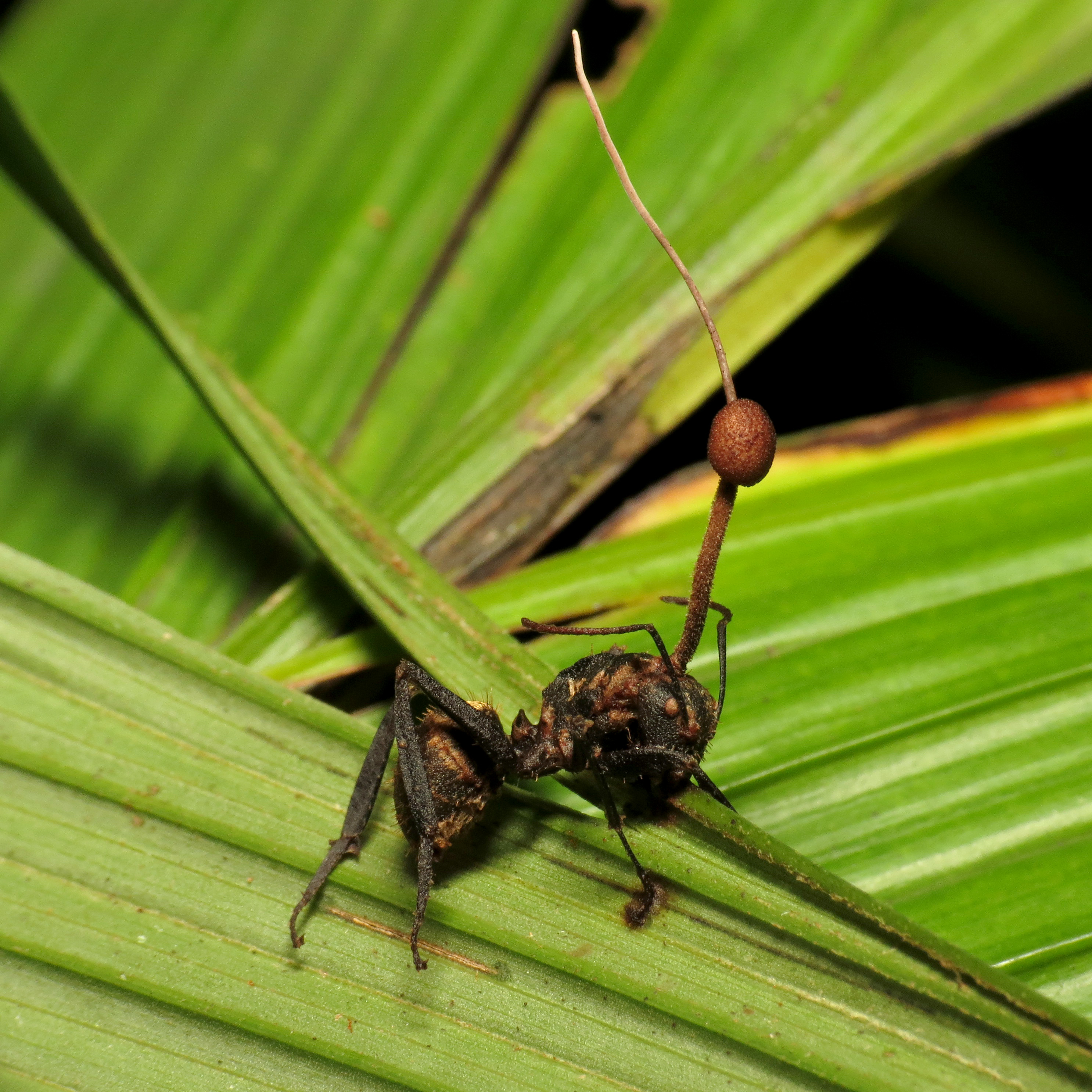The zombies among us
While there are no human zombies (if you discount those who never look up from their phones), there are others beneath our feet. We’re talking about zombie ants.
With tiny brains and tiny immune systems, small animals tend to be easier targets for parasites that force their victims to lose control. But don’t get too comfortable … more complex animals, including humans, aren’t immune from parasitic mind control, because the underlying mechanism that leads to this parasitic puppeteering is part of us all.
As an ant forages for food, it might ingest some spores of a parasitic fungus, Ophiocordyceps unilateralis. The ant soon starts a drunken walk, and then—in actions unusual for unaffected ants—it climbs away from its fellow ants (or is later carried away) up a tree or a blade of grass and chomps down to stay in place. The fungus kills the ant from the inside, sprouts out of its head and releases spores onto the ground below, to start all over again.
It’s tempting to think that the fungus has complete control over the ant during these bouts of infection. But part of the behaviour of infected ants may be an evolutionary adaptation—an attempt to save their colony from infection. Even so, the fungus does cause the ant to lose some self-control, leading to the clenching of jaws that root it in place for the fungus party to begin.
How does this happen? Chemicals! Specifically, chemicals that interact with the ant’s nervous system (which includes its brain). We all have nervous systems with chemical receptors, so all a parasite needs to do to control us is create the right chemical cocktail and get it inside our bodies. This is harder for bigger and more complex creatures—but evolution is relentless, and it certainly doesn’t stop at zombie ants.

Ants are found across the world, and so are their parasitic puppeteers. Each species of ant tends to have its own Ophiocordyceps fungus species that takes advantage of the ant species’ chemistry and habitat. This is an indication that they’ve co-evolved—the ants and the fungus have been working together (so to speak) for a long, long time.
But ants aren’t commandeered solely by Ophiocordyceps. The flatworm Dicrocoelium dendriticum also goes to extraordinary lengths to take over the motor control of ants.
Why ants? One reason is that they’re an incredibly successful group of animals. They’ve conquered almost the entire planet, have been around since the time of the dinosaurs, and in some regions of the world they’re thought to account for over a quarter of the animal biomass. While other animals died out over the long history of life on Earth, ants survived—and these piggy-backing parasites came along for the ride.
So if you’re thinking of creating your very own zombie army, perhaps you shouldn’t focus on humans. Ants have a better track record, are easier to control, and there are many, many more of them for you to command.





